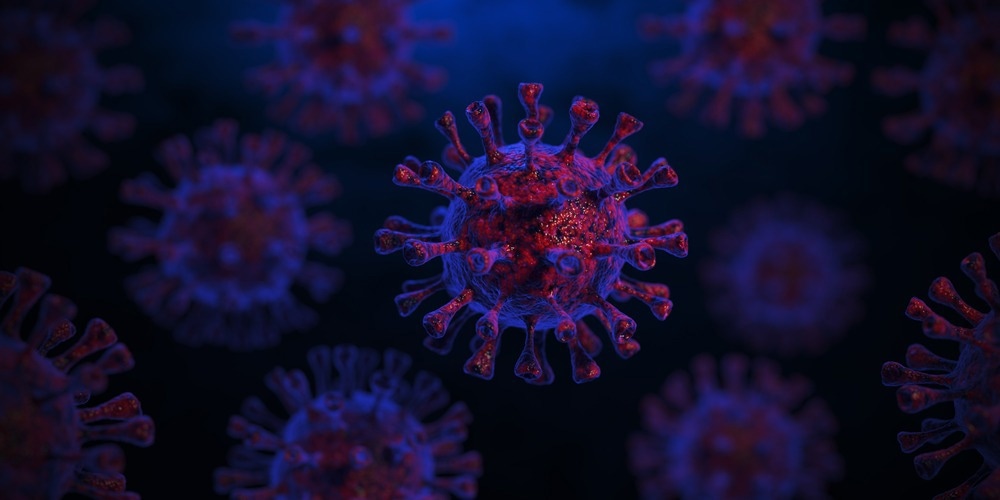Introduction
What Have We Learned from the COVID-19 Pandemic?
Epidemiology
Virology
Clinical
Diagnosis
Treatment
Prevention
In Conclusion
References
The outbreak of the COVID-19 pandemic involving a novel pathogen has exposed critical gaps in our knowledge about detecting, managing, treating, and preventing infectious diseases. A survey of lessons learned has been distilled under the following categories: epidemiology, virology, clinical, diagnosis, treatment, and prevention. In this article, we will consider each of these in turn.

Image Credit: SWKStock/Shutterstock.com
What Have We Learned from the COVID-19 Pandemic?
The SARS-CoV-2 emerged from the Chinese city of Wuhan in the winter of 2019, and the World Health Organisation (WHO) announced a novel coronavirus outbreak in January 2021. The COVID-19 pandemic has resulted in more than 616 million infections and 6.53 million deaths (Sep 22).
Since then, there has been what has been described as a tsunami of biomedical literature on SARS-CoV-2 and COVID-19. The journal “Clinical Infectious Diseases” alone received the entire quota of manuscripts ordinarily received each year within the first nine months of 2020. It has been challenging for clinicians and researchers to navigate this unprecedented explosion of scholarship. A brief survey of some of the key lessons learned is given here.
Epidemiology
There are significant lessons to be learned here regarding pre-symptomatic transmission and super spread. A considerable number of COVID-19 infections are asymptomatic. In cases where symptoms do appear, the virus is usually transmitted before onset, with patients becoming highly contagious a day or two beforehand. The fact of asymptomatic infection has presented a challenge for researchers in case identification and tracing the transmission of the virus.
A significant factor in mass transmission has been identifying episodic “superspreader events.” Here epidemiologists estimate that just 10% of infected individuals can be responsible for as much as 80% of transmission. It stands to reason, therefore, that recognizing and curtailing events deemed to be high-risk for super spreading makes sense if we limit viral transmission.
Other lessons learned here have concerned short-range aerosol transmission and have led to proposals for prevention that center around the “three C’s,” namely the avoidance of; closed and poorly ventilated spaces, crowds, and close contact. And finally, researchers have discovered racial and socioeconomic disparities concerning SARS-CoV-2 and COVID-19 that are similar to those observed with the HIV pandemic.
Virology
COVID-19 has been observed to display a vast spectrum of clinical manifestations and levels of severity with an additional geographic variability to boot. Although external infection control measures have been successfully implanted and assessed for usefulness, factors intrinsic to the host are less well understood. On this front, researchers have recently observed a link between inadequate type-1 interferon responses to coronavirus susceptibility.
Clinical
Age, sex, and the presence of comorbidities such as Type-1 Diabetes have an impact on the severity of the disease and mortality. The clinical manifestation of SARS-CoV-2 infection in children is largely benign ––90% of children are asymptomatic or experience only milder symptoms. A rare but severe manifestation of COVID-19 in children is Multisystem Inflammatory Syndrome in Children (MIS-C).
Most common in older children in the 8 – 11 age group MIS-C typically presents 2-4 weeks after exposure and results in the following symptomology: fever, rash, conjunctivitis, abdominal pain, shock, and cardiac dysfunction.
Although COVID-19 is predominantly a respiratory tract infection, the virus has been associated with multiorgan system involvement in adults. Meanwhile, its effects on the lungs can be acute. Patients with a severe form of the disease have incurred the progressive development of respiratory failure, thus requiring supplemental oxygen. It is hypothesized that respiratory failure occurs due to a type 2 immune response.
A serious complication is the development of acute respiratory distress syndrome (ARDS).

Image Credit: PopTika/Shutterstock.com
Diagnosis
Demand for diagnostic testing amidst the pandemic has driven innovations and will most certainly lead to future improvement in microbial diagnostics more generally. Amongst the lessons learned about diagnostic testing during the pandemic were that: antibody responses can be short-lived, especially in the case of asymptomatic or very mild infection, and that inflammatory biomarkers can predict disease progression and complications.
Treatment
The COVID-19 pandemic has led to advances in how we carry out our clinical trials, and adaptive trial designs have been carried out with great success. It is now agreed that large, coordinated, multicenter, and randomized clinical trials are superior to smaller fragmented trials or observational studies.
Researchers have also been reminded about the importance of scientific rigor in clinical trials to test vaccines, whereby the need to ensure efficacy and safety has been paramount.
Prevention
It is anticipated that an effective vaccine will bring an end to the pandemic. Besides the vaccine, monoclonal antibodies are being investigated as a targeted immunotherapeutic for the prevention and treatment of COVID-19. There are also external measures of prevention. For example, we are all aware of a protection measure using face coverings to prevent virus transmission. Finally, the pandemic outbreak established that though health care workers are at risk, this risk can be much reduced via the introduction of appropriate PPE.
In Conclusion
Global pandemics have been an ongoing feature of human history, and there will likely be others after COVID-19. Indeed, the risk of the emergence of novel diseases is rapidly increasing. One of the most important lessons learned from COVID-19 is that if pandemic control is to be affected, its effectiveness rests on a rapid and coordinated response at the local, national, and international levels.
References:
- Fang, F., et al. 2020. COVID-19—Lessons Learned and Questions Remaining. Clinical Infectious Diseases. Doi: 10.1093/cid/ciaa1654.
- Our World in Data (OWD) 2022. New Cases and Deaths. Online: https://ourworldindata.org/explorers/coronavirus-data-explorer.
- Stenseth, N. et al. 2021. Lessons Learnt From the COVID-19 Pandemic. Frontiers in Public Health. Doi: 10.3389/fpubh.2021.694705.